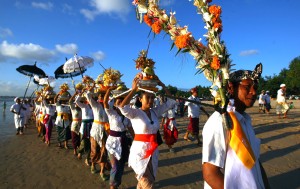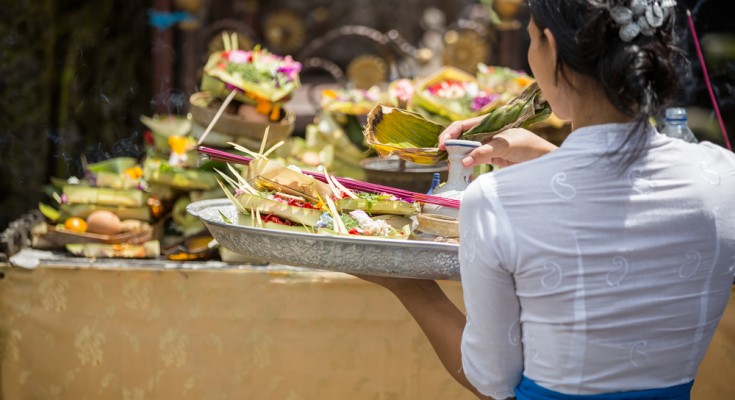 Bali is renowned for its bright and richly cultural ceremonies, and any visitor who spends more than a few days on the island will be certain to see some kind of temple festival, colourful procession, or ritual. There are also numerous island-wide religious festivals to mark sacred days according to the Balinese calendar, together with family rituals such as birth celebrations, tooth filing ceremonies, weddings and cremations.
Bali is renowned for its bright and richly cultural ceremonies, and any visitor who spends more than a few days on the island will be certain to see some kind of temple festival, colourful procession, or ritual. There are also numerous island-wide religious festivals to mark sacred days according to the Balinese calendar, together with family rituals such as birth celebrations, tooth filing ceremonies, weddings and cremations.
The cremation ceremony is the most elaborate and costly in the Balinese culture. There are many rituals associated with this occasion and it is of great importance. The Balinese Hindus believe that if a spirit does not have an appropriate cremation it will haunt the earth and the living, and they therefore regard the incremation of a loved one as a time of joyous celebration. The Balinese are usually willing to allow respectful foreign guests to witness their cremation ceremonies.
Every 210 days, the Balinese celebrate ‘Galungan,’ the island’s most important festival, which signifies the victory of virtue over evil. This is a time when the ancestral spirits and Balinese deities descend to Earth to be honoured, and you will see the streets lined with ‘Penjor’– slender, eight-metre-high, gracefully arching bamboo poles, festooned natural ornamentation. The tenth day after Galungan, which is known as ‘Kuningan,’ marks the end of the festival, and is believed to be the day when the spirits ascend back to heaven.
Nyepi, which occurs on the day after the dark moon of the March equinox, is Bali’s Day of Silence, but the days leading up to Nyepi are filled with activity. The Balinese Hindus dress in gorgeous traditional costume, and religious objects and the effigies of the gods are taken in lavish processions from all the village temples to sacred springs, rivers, or the sea for purification. The day before Nyepi is known as ‘Pengrupukan’, and in the evening, exciting street carnival processions take place as the evil spirits are driven away with gongs, drums, cymbals, firecrackers and huge, scary, highly-creative papier-mâché monsters known as ‘Ogoh-ogoh’, with fangs, bulging eyes and scary hair.
The Odalan, or temple anniversary celebration, is a lavish ceremony commemorating the founding of the temple, and as each Odalan date varies from one temple to another, you will probably have the opportunity to see one. All kinds of religious icons and precious objects, parasols, effigies, and huge ‘wayang landung’ puppets are paraded around the temple in a feast of bustle and colour, while decorations ranging from the bizarre to the brilliant adorn the temple walls. The women create astonishing temple offerings in the form of soaring pyramids of fruit, rice cakes and flowers, ornamented with coconut-leaf decorations. These are brought to the temple in long and spectacular processions with the women carrying the offerings on their heads.











